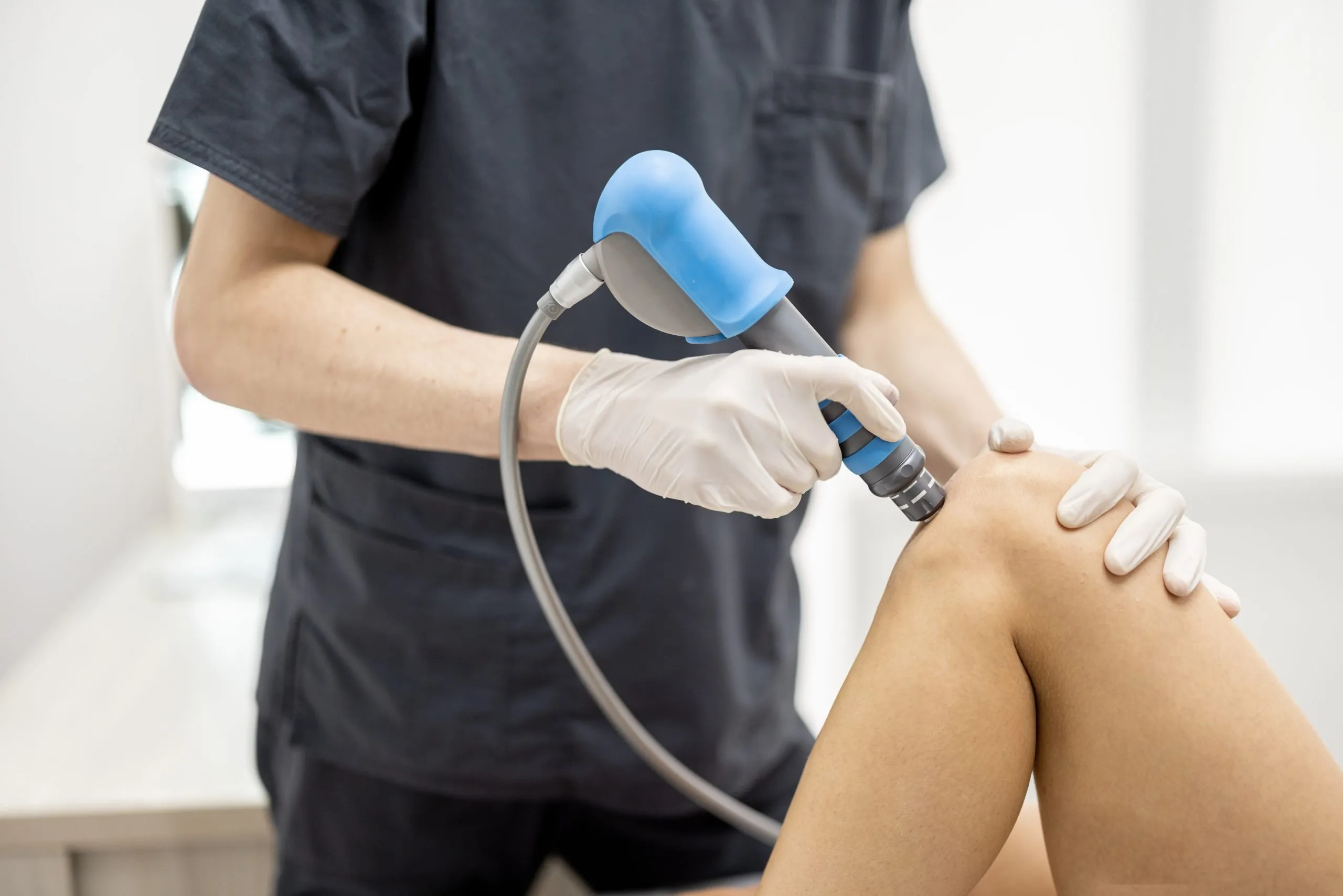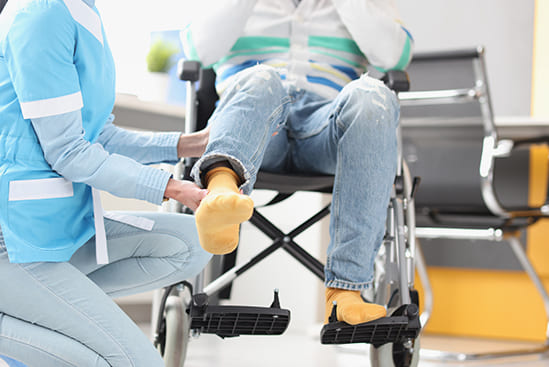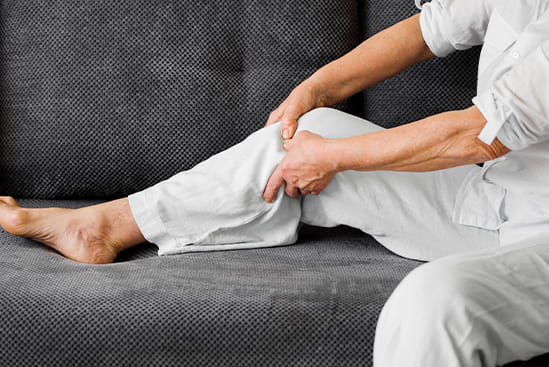

Introduction
If you’re struggling with nagging joint pain, muscle aches, or sports injuries that just won’t go away, shockwave therapy might be the solution you’ve been waiting for. This non-invasive treatment is becoming more popular in Kuala Lumpur (KL) among people looking for fast, effective pain relief, without the need for surgery or heavy medication. Whether you’re an athlete recovering from a tendon injury or someone dealing with chronic heel pain, shockwave therapy can help restore your mobility and get you back on your feet.
Shockwave therapy works by sending sound waves into the affected area of your body. These waves boost blood flow, speed up healing, and break down tight scar tissue or calcium build-up that’s causing pain. The result? Less pain, better movement, and a faster return to your normal activities. At Synapse Physiotherapy clinics across KL and the Klang Valley, we’ve seen many clients bounce back from pain using this safe and scientifically backed method.
Let’s explore how shockwave therapy works, what it treats, and why it could be the missing piece in your recovery journey.
What is Shockwave Therapy?
In simple terms, shockwave therapy uses high-energy sound waves, not electricity to treat stubborn injuries and chronic pain. It’s the same type of technology that doctors use to break down kidney stones. In physiotherapy, it’s used at a much gentler level to stimulate healing in soft tissues like muscles, tendons, and ligaments.
How It Works
The device is applied to your skin (no needles or surgery involved), and the sound waves travel into the deeper tissues. These waves “wake up” the body’s natural healing process by increasing circulation and promoting the regeneration of injured tissues. As a result, you experience quicker healing and noticeable pain relief over time.
What Conditions Can Shockwave Therapy Treat?
Shockwave therapy is often used for pain and injuries that just don’t seem to go away, even after rest, stretching, or traditional physiotherapy. Below are some of the most common conditions it helps with:
Commonly Treated Conditions
- Plantar fasciitis (heel pain)
- Tennis elbow or golfer’s elbow
- Shoulder tendinitis or calcification
- Achilles tendon pain
- Knee pain (jumper’s knee or patellar tendinopathy)
- Hip pain or bursitis
- Chronic neck or back tightness (due to muscle knots or trigger points)
These are conditions that usually involve tight, inflamed, or damaged tendons and tissues. When left untreated, they can affect your ability to walk, sit, lift, or play sports.
Explore all the conditions we treat here.
How Does Shockwave Therapy Help?
Understanding how shockwave therapy works inside your body can provide more clarity on why it’s so effective.
Key Healing Mechanisms
- Improves Blood Flow – The sound waves create tiny vibrations in your tissue, which encourage more blood to flow into the injured area. Better blood flow means faster healing.
- Breaks Down Scar Tissue or Calcium – In some injuries, calcium builds up in the tendons and causes pain. Shockwave breaks these deposits down so the body can reabsorb them naturally.
- Reduces Pain – It “resets” nerve endings in the area, helping to dull or stop the pain signals being sent to your brain.
- Stimulates Healing – The waves trigger the release of natural healing chemicals like collagen and growth factors, speeding up tissue repair.
What Does a Session Feel Like?
What to Expect During Treatment
A typical shockwave therapy session lasts about 15–20 minutes. Here’s what to expect:
- You’ll lie or sit in a comfortable position depending on where your pain is.
- Your physiotherapist will apply a gel to your skin (like an ultrasound).
- The shockwave device is placed on the area, and you’ll hear clicking or tapping sounds.
- You may feel a pulsing sensation or slight discomfort, especially if the area is very sore.
The intensity can be adjusted depending on your tolerance. Most people describe it as uncomfortable but bearable, like a deep massage on a tender spot. Moreover, there is no downtime needed, and many people feel better after just a few sessions.
How Many Sessions Do You Need?
Treatment Duration and Expectations
The number of sessions depends on how severe and long-standing your condition is. Typically, patients start with 3 to 6 sessions, spaced about 1 week apart. Many people begin to notice improvements after the first or second session, especially with reduced pain and easier movement.
Although not a quick fix, shockwave therapy can dramatically speed up your recovery, especially when combined with proper physiotherapy exercises and complementary treatments like our Spine & Core Rehabilitation Programme.
Why Choose Shockwave Therapy at Synapse Physiotherapy in KL?
At Synapse Physiotherapy, we use evidence-based techniques to make sure our treatments actually work. All our therapists are trained in shockwave therapy and know how to apply it effectively based on your specific injury.
What Sets Us Apart
- Personalised care – We assess your condition and adjust the treatment intensity to match your pain level and goals.
- Experienced therapists – Our team treats hundreds of patients a month with shockwave therapy across our clinics in Damansara Heights, Ampang, Cyberjaya, and KL Sentral.
- Combination with rehab – We don’t just do shockwave therapy alone. We combine it with stretching, strengthening, and manual therapy to give you long-term results. Explore our Strength & Conditioning programme.
Convenience – With clinics across the Klang Valley, getting quality care close to home is easy.
Is Shockwave Therapy Safe?
Yes, shockwave therapy is clinically proven and has been approved by international health authorities. It’s safe for most people, but you may not be suitable for shockwave therapy if:
- You’re pregnant
- You have a blood clotting disorder
- You use a pacemaker
- You have a tumour or infection in the treatment area
Your physiotherapist will always do a proper assessment before starting shockwave therapy to ensure it’s safe and effective for you.
Frequently Asked Questions (FAQs)
1. How soon will I feel relief after shockwave therapy?
Many people notice improvement after just one or two sessions, particularly with pain reduction and mobility.
2. Does shockwave therapy hurt during or after the session?
You may feel slight discomfort during the session, similar to a deep massage, but it is generally tolerable.
3. Is shockwave therapy suitable for old injuries?
Yes, it is often effective for chronic injuries that have not responded to other treatments.
4. Can I go back to work or exercise after a session?
Yes, most people can resume their normal activities right after a session, although high-impact activities should be avoided for 24-48 hours.
5. Will I need other treatments alongside shockwave therapy?
Combining shockwave therapy with physiotherapy exercises often results in faster, more effective recovery.
Final Thoughts: Get Moving Again
Pain doesn’t have to be a part of your everyday life. Whether it’s a sports injury, work-related strain, or an old injury that never healed right, shockwave therapy can help you get back to doing what you love, pain-free and confidently.
At Synapse Physiotherapy, we’ve seen how shockwave therapy has helped clients of all ages regain their mobility, reduce their pain, and avoid surgery. If you’ve tried everything and nothing seems to work, it might be time to explore this modern, non-invasive solution.
Let us help you restore movement and take control of your recovery. Book your shockwave therapy session in KL today.
Tags :

Back & Neck Pain
- Spine & Core Rehabilitation
- Strength & Conditioning Programme
- Pain Management
- Biomechanical Assessment
- Sports Physiotherapy
- Group Class

Sports Injuries
- Strength & Conditioning Programme
- Pain Management
- Biomechanical Assessment
- Sports Physiotherapy
- Shockwave Therapy
- Group Class

Work Desk Injuries

Pre-Post-Surgical Conditions

Scoliosis & Postural Abnormalities

Neurological Conditions

Osteoarthritis & Rheumatism
Joint degeneration and inflammation happens as the human body grows older, but that does not mean our way of life degenerates as well. Relief your joint pains with a joint effort together with your physiotherapist, who will provide pain-relief treatments and prescribe exercises for your wellbeing.

Conditions Relating To Elderly
Common conditions in the older age population include hips & knee pain, back & neck pain, osteoarthritis, rheumatism, fear of falling and many more. Aging and degeneration of bodily function is inevitable, but here at Synapse, we will help you live the best of your life.





